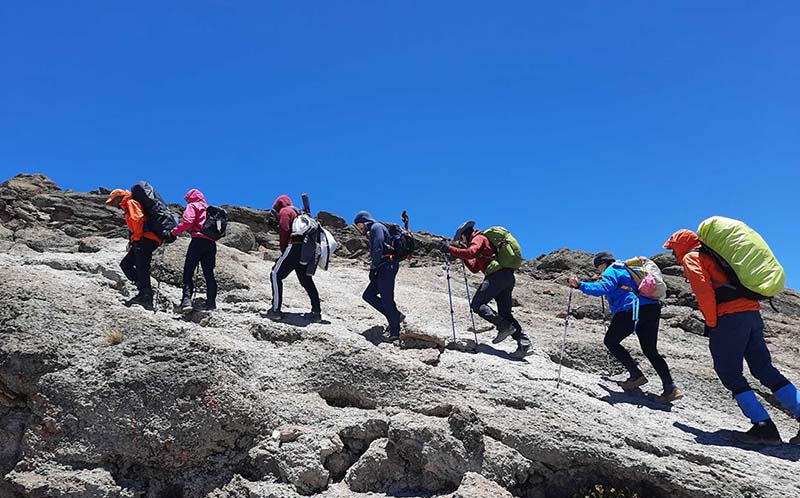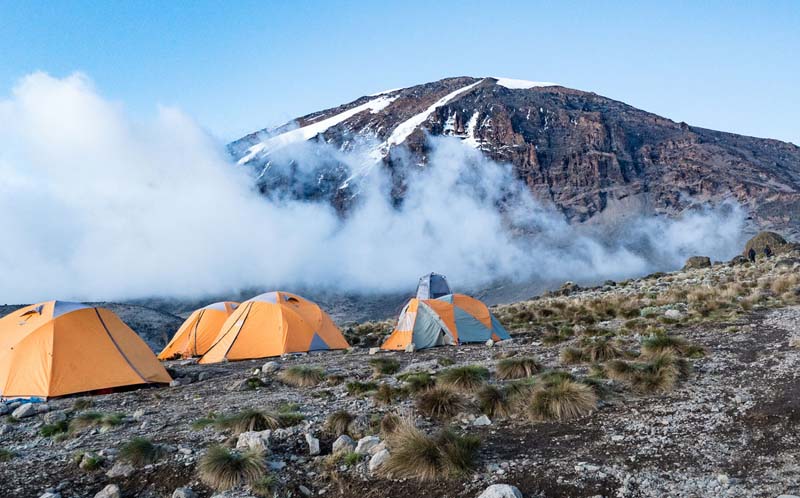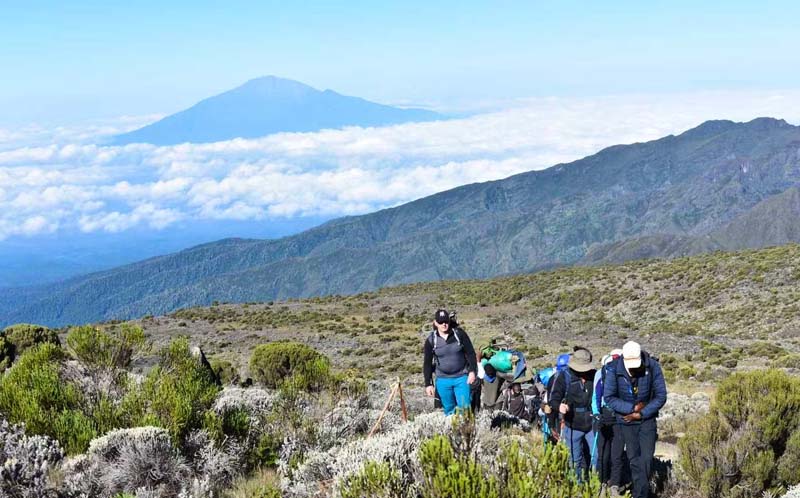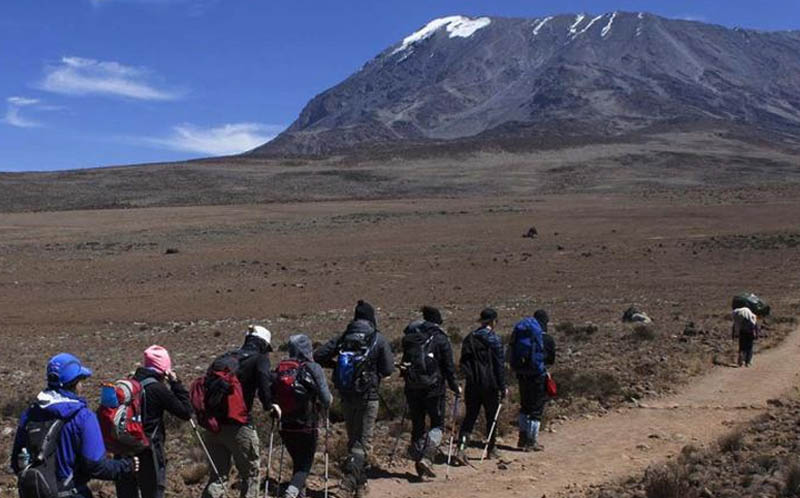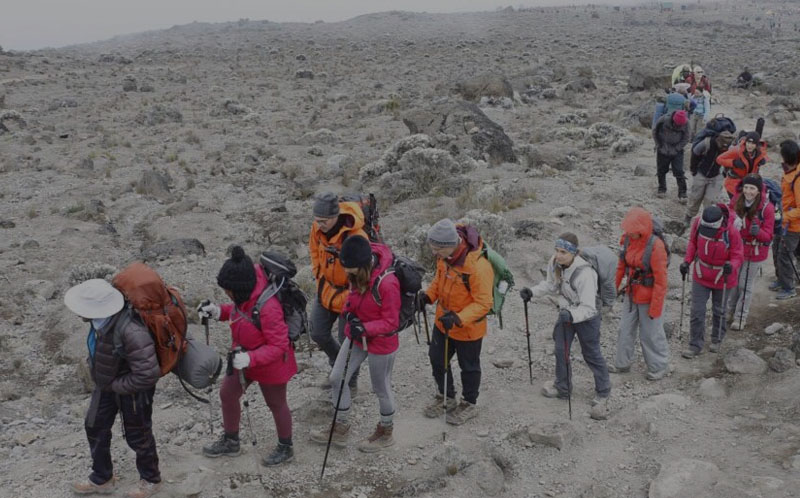Mount Kilimanjaro
Mount Kilimanjaro: The Majestic Roof of Africa
Mount Kilimanjaro, Africa’s tallest mountain and one of the world’s most iconic natural landmarks, rises 5,895 meters (19,341 feet) above sea level in northeastern Tanzania. This dormant stratovolcano, with its three volcanic cones—Kibo, Mawenzi, and Shira—dominates the surrounding landscape, standing as the highest freestanding mountain on Earth. Its snow-capped peak, despite being near the equator, has fascinated adventurers, scientists, and nature enthusiasts for centuries. Kilimanjaro is not only a geographical marvel but also an ecological wonder, boasting five distinct climate zones, ranging from lush rainforests at its base to the arid alpine desert and the icy glaciers near the summit. This dramatic shift in ecosystems provides a home to a wide variety of plant and animal species, making the mountain a significant site for biodiversity.
The mountain holds deep cultural and historical significance. It has long been revered by the local Chagga people and has inspired countless legends and folklore. European explorers first documented Kilimanjaro in the 19th century, and since then, it has become one of the most popular trekking destinations in the world. Unlike many other high-altitude climbs, summiting Kilimanjaro does not require technical mountaineering skills, making it an accessible yet challenging adventure for climbers from all walks of life. Every year, thousands of trekkers attempt to reach Uhuru Peak, the highest point on Kibo, drawn by the breathtaking views and the sense of personal achievement that comes with conquering Africa’s highest summit. However, climate change poses a threat to the mountain’s famous glaciers, which have been retreating at an alarming rate over the past century.
Mount Kilimanjaro remains a symbol of natural beauty, endurance, and adventure. Whether climbed for personal challenge, scientific research, or simply to witness its stunning landscapes, it continues to captivate and inspire people worldwide.
Kilimanjaro Climbing Routes
Kilimanjaro Climbing Routes - Which Route is the Best?
Mount Kilimanjaro, Africa’s highest peak at 5,895 meters, attracts thousands of climbers each year. There are several routes to the summit, each offering different challenges, scenery, and success rates. Choosing the best route depends on your experience level, fitness, acclimatization needs, and personal preferences. Below is an overview of the main Kilimanjaro routes to help you decide which one suits you best.
The best route depends on your goals. If you prioritize scenery, acclimatization, and a high success rate, Lemosho is the best choice. If you want a slightly shorter but still scenic and challenging climb, Machame is an excellent alternative. For those who prefer a quiet and gradual ascent, Rongai is a good option. If you have extra time and want the best acclimatization experience, Northern Circuit is the top choice. On the other hand, Marangu may be suitable for those looking for a faster, hut-based trek, but it has a lower success rate. Umbwe is only recommended for highly experienced climbers due to its difficulty.
Ultimately, the best route for you will depend on your fitness level, trekking experience, and how much time you have to acclimatize. If reaching the summit safely with a higher chance of success is your priority, choosing a longer route like Lemosho or the Northern Circuit is highly recommended.
Marangu Route (5-6 Days) – The “Coca-Cola Route”
The Marangu Route is one of the most popular routes and the only one with hut accommodations instead of tents. It is often considered the easiest because of its gradual ascent. However, the shorter duration limits acclimatization, leading to a lower success rate. Additionally, it follows the same path up and down, making it less scenic than other routes. This route is suitable for trekkers who prefer a less rugged experience and do not mind the higher traffic.
Machame Route (6-7 Days) – The “Whiskey Route”
The Machame Route is one of the most scenic and popular choices for climbers. It features diverse landscapes, including rainforests, moorlands, and alpine deserts. Although steeper than Marangu, it allows for better acclimatization with the “climb high, sleep low” approach, leading to a higher success rate. This route is ideal for adventure seekers who want a balance of challenge, beauty, and a good chance of reaching the summit.
Lemosho Route (7-8 Days) – Best for Scenery & Acclimatization
The Lemosho Route is widely regarded as the most beautiful path to the summit. It starts on the western side of Kilimanjaro and gradually ascends through lush forests and breathtaking landscapes. The longer duration allows for excellent acclimatization, increasing the chances of success. Since it is less crowded than Machame, it is a great option for those looking for a quieter, scenic, and highly successful climb.
Rongai Route (6-7 Days) – The Northern Route
Approaching Kilimanjaro from the north, the Rongai Route offers a unique perspective with drier conditions and fewer climbers. This makes it an excellent option during the rainy season when the southern routes can be muddy. The ascent is gradual, making it one of the easier routes, though it is slightly less scenic than Lemosho or Machame. If you prefer a quiet trek with a good success rate, Rongai is a solid choice.
Northern Circuit (8-9 Days) – The Ultimate Route for Acclimatization
The Northern Circuit is the longest and least crowded route, offering unparalleled panoramic views of Kilimanjaro. It takes about 8-9 days to complete, providing the best acclimatization and the highest summit success rate. This route circles around the mountain, giving climbers a 360-degree experience. If you have the time and budget, the Northern Circuit is an excellent option for a rewarding and stress-free climb.
Umbwe Route (5-6 Days) – The Steepest & Most Challenging
The Umbwe Route is the shortest and steepest path to the summit, making it the most difficult option. It has little time for acclimatization, which results in a lower success rate. This route is best suited for experienced climbers who are confident in their endurance and ability to handle rapid altitude gain. While it offers stunning scenery, it is not recommended for beginners or those prone to altitude sickness.
Marangu Route (5-6 Days) – The “Coca-Cola Route”
The Marangu Route is one of the most popular routes and the only one with hut accommodations instead of tents. It is often considered the easiest because of its gradual ascent. However, the shorter duration limits acclimatization, leading to a lower success rate. Additionally, it follows the same path up and down, making it less scenic than other routes. This route is suitable for trekkers who prefer a less rugged experience and do not mind the higher traffic.
Machame Route (6-7 Days) – The “Whiskey Route”
The Machame Route is one of the most scenic and popular choices for climbers. It features diverse landscapes, including rainforests, moorlands, and alpine deserts. Although steeper than Marangu, it allows for better acclimatization with the “climb high, sleep low” approach, leading to a higher success rate. This route is ideal for adventure seekers who want a balance of challenge, beauty, and a good chance of reaching the summit.
Lemosho Route (7-8 Days) – Best for Scenery & Acclimatization
The Lemosho Route is widely regarded as the most beautiful path to the summit. It starts on the western side of Kilimanjaro and gradually ascends through lush forests and breathtaking landscapes. The longer duration allows for excellent acclimatization, increasing the chances of success. Since it is less crowded than Machame, it is a great option for those looking for a quieter, scenic, and highly successful climb.
Rongai Route (6-7 Days) – The Northern Route
Approaching Kilimanjaro from the north, the Rongai Route offers a unique perspective with drier conditions and fewer climbers. This makes it an excellent option during the rainy season when the southern routes can be muddy. The ascent is gradual, making it one of the easier routes, though it is slightly less scenic than Lemosho or Machame. If you prefer a quiet trek with a good success rate, Rongai is a solid choice.
Northern Circuit (8-9 Days) – The Ultimate Route for Acclimatization
The Northern Circuit is the longest and least crowded route, offering unparalleled panoramic views of Kilimanjaro. It takes about 8-9 days to complete, providing the best acclimatization and the highest summit success rate. This route circles around the mountain, giving climbers a 360-degree experience. If you have the time and budget, the Northern Circuit is an excellent option for a rewarding and stress-free climb.
Umbwe Route (5-6 Days) – The Steepest & Most Challenging
The Umbwe Route is the shortest and steepest path to the summit, making it the most difficult option. It has little time for acclimatization, which results in a lower success rate. This route is best suited for experienced climbers who are confident in their endurance and ability to handle rapid altitude gain. While it offers stunning scenery, it is not recommended for beginners or those prone to altitude sickness.
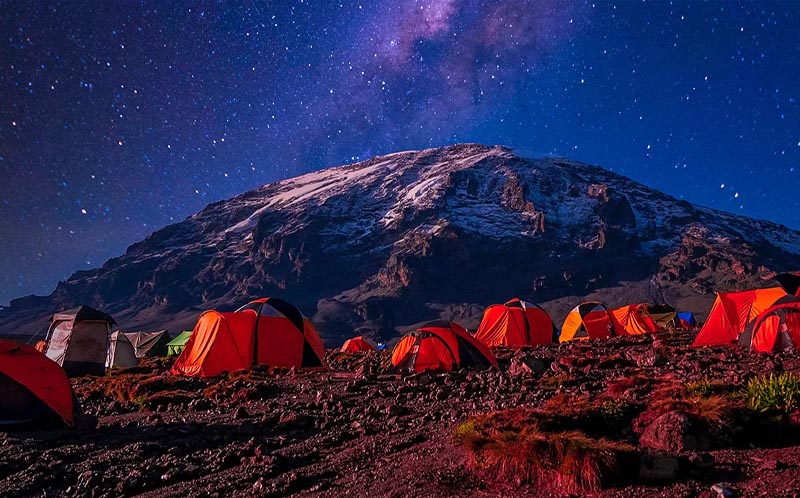
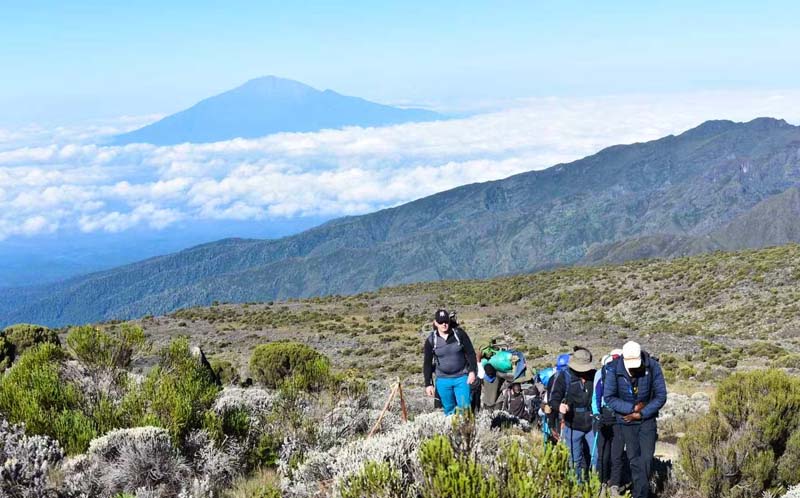
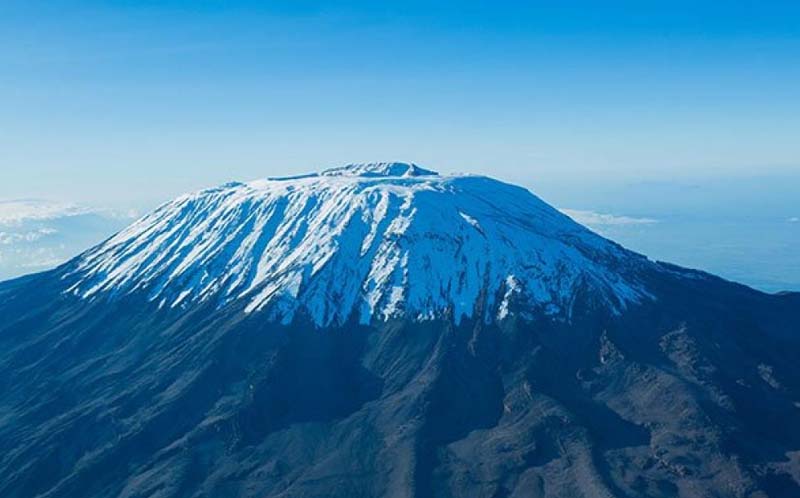
Kilimanjaro Frequently Asked Questions (FAQs)
How Difficult is Climbing Kilimanjaro?
Kilimanjaro is considered a non-technical climb, meaning you don’t need mountaineering skills or special equipment like ropes or crampons. However, the high altitude, long trekking days, and cold temperatures make it a challenging trek. Physical fitness, proper acclimatization, and mental determination are key to reaching the summit.
How Long Does It Take to Climb Kilimanjaro?
The duration of the climb depends on the route chosen. The shortest routes take 5-6 days, while the longest ones, such as the Northern Circuit, can take up to 9 days. Longer routes provide better acclimatization, increasing the chances of reaching the summit successfully.
What is the Best Time to Climb Kilimanjaro?
The best times to climb Kilimanjaro are during the dry seasons:
- January to mid-March – Warmer weather with fewer crowds.
- June to October – Peak season with stable conditions but more trekkers.
The rainy seasons (April-May and November) are less ideal due to slippery trails and reduced visibility. However, some routes, like Rongai, remain drier than others.
What is the Success Rate for Reaching the Summit?
Success rates depend on the route and number of days taken. Shorter routes (5-6 days) have lower success rates (50-60%) due to insufficient acclimatization. Longer routes (7-9 days) have much higher success rates (80-90%) as they allow climbers to adjust to the altitude gradually.
Do I Need a Guide to Climb Kilimanjaro?
Yes, hiring a licensed guide is mandatory. Kilimanjaro National Park regulations require all climbers to be accompanied by a registered guide. Most trekkers join organized group or private tours, which include guides, porters, and cooks.
What Should I Pack for the Climb?
Essential items include:
- Clothing – Layered clothing, including a warm jacket, thermal base layers, and waterproof gear.
- Footwear – Sturdy, waterproof trekking boots.
- Gear – A high-quality sleeping bag, trekking poles, headlamp, and daypack.
- Health Items – Sunscreen, sunglasses, altitude sickness medication, and a water purification system.
What are the Risks of Altitude Sickness?
Altitude sickness is a common challenge on Kilimanjaro. Symptoms include headaches, dizziness, nausea, and shortness of breath. To reduce the risk:
- Choose a longer route for better acclimatization.
- Hike slowly and follow the “pole pole” (Swahili for “slowly”) approach.
- Drink plenty of water and stay hydrated.
- Consider taking Diamox (acetazolamide) to aid acclimatization.
What Happens if I Can’t Reach the Summit?
If you experience severe altitude sickness or exhaustion, your guide will determine whether you should descend for safety. Porters and support staff assist climbers who need to turn back before reaching the summit.
Climbing Kilimanjaro is an incredible adventure, but preparation is key to success. With the right route, proper acclimatization, and a good support team, reaching the “Roof of Africa” is an achievable goal for many trekkers.
Let's start Planning!
Ready for Your Adventure?
Absolutely! Are you ready to embark on the adventure of a lifetime? Whether it’s witnessing the Serengeti Wildebeest Migration, conquering Mount Kilimanjaro, or exploring the wild beauty of Tanzania, Tanzania Migration Safari is here to make it happen.
Let’s start planning your dream safari and trekking experience today! 🚀🌍🐘
Where would you like to begin your journey? 😊

